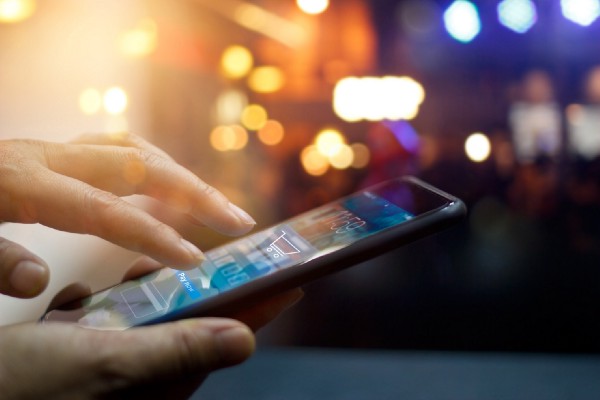My last overdraft changed our marriage.
My wife Sue and I had started our life together back in the era of paper banking with separate checking accounts. We both worked and each of us took responsibility for different bills and then split our rent or mortgage. That worked fine for a few years. Then one day I had to fess up to paying what was then a $15 fee because our bank had paid a check into overdraft. It was an embarrassing moment in our competitive relationship, as we each prided ourselves on being good at math and financially responsible.
As Sue recalls it, I hadn’t remembered to record several ATM withdrawals in my check register. As a result, I had miscalculated how much money was in my checking account and hadn’t transferred new funds from savings (where my payroll deposits went) in time. As far as she was concerned, that lapse proved me unworthy of managing our household finances. Sue insisted that from then on we manage them through a joint account that she would balance and reconcile each month. I was secretly relieved, and Sue’s vigilant record keeping and her professional skills as a financial controller have kept our joint account in the black ever since.
That was over thirty years ago. Since then, balancing and reconciling a checkbook has become a lot harder. And increasingly, it has become a forgotten art.
You can partly blame electronic banking: first ATMs, then bank-by-phone, then online banking, and now mobile banking all provide ample ways for us to check on our “available balance.”
But also blame complexity: Those of us who use their debit cards instead of cash are likely making several small electronic withdrawals from our accounts each day, so few take time to note these in a little paper book each time we swipe. And now, instead of checks to record as we write them, many of us have signed up to have our accounts debited automatically for these monthly bills. We either have to check what transactions have hit each day, or keep a list of those that hit each month and adjust our manual balances accordingly.
So most people now rely on instantaneous balance readings to tell what’s safe to spend. The bank’s “available balance” figure usually adjusts for debit card transactions that haven’t yet settled and excludes deposits the bank has received but that haven’t yet cleared. But that figure doesn’t account for checks one has written but that haven’t yet cleared, or for automatic debits owed various billers before they’re paid. And the figure doesn’t adjust for debit card purchase amounts that are bigger than what the bank authorized (e.g. at the self-serve gas pump or at restaurants after tips have been added).
Available balance works reasonably well for consumers able to keep extra dollops of cash in their accounts (a good thing). But for consumers whose balances get low each month — those living paycheck to paycheck, or those who keep their checking balances low as a way to discipline spending — using available balance to track funds is like flying at low altitude in the dark.
The results can be costly: in particular, about three fourths of overdrafts on debit card transactions — and as much as a third of the $15 Billion in overdraft fees Americans paid last year — occur when the available balance is enough to cover the authorized amount. But when these transactions settle one, two, or three days later, there isn’t enough in the account to cover them. That‘s either because the approved amounts and the final purchase amounts were different (gas pump, tips, etc.) or because pending checks or electronic bill payments were presented and paid (and lowered the accounts’ balances) before the debit card transactions settled.
This problem is likely to persist until all payments become real-time. And banks that rely on overdraft revenue from debit card transactions are counting on it persisting. But a little bit of tech has begun to help in the meantime.
Imagine going to your smart phone to view your checking balance and seeing two numbers instead of one. The first number is the traditional available balance. The second is an estimate –more often than not, a smaller number — that projects what your balance will be one, two or three days from now. It accounts for the typical differences between authorization and settlement amounts of still-pending debit card transactions. It anticipates and deducts regular recurring bill payments that the app has learned hit your account at the same time each month. It might even account for paper checks you’ve scanned before putting them in the mail. And it accounts for your regular salary deposit if that dependably arrives on particular days of the week or month.
What I’m describing doesn’t entirely exist yet. But pieces of it, like predicting pre-authorized debits and deducting them from “safe to spend,” are available through fintechs such as Douugh, Empower, Personetics (UK), Tuesday (UK), Varo Money, and Bank of America’s personal financial assistant, “Erica.”
And the app I’m describing won’t pretend to be magic or perfect. Tap on the estimated balance number and it will show you the math. It’s just subtraction and addition and a few decision rules based on your monthly transaction patterns. But that’s what a lot of AI is.
The few fintechs now offering pieces of this functionality for small monthly fees could save hundreds per year in overdraft penalties. They might even save a marriage here and there.
AI isn’t a perfect substitute for the paper check register so beloved by my wife and financial literacy coaches. But it could be the next best thing for those who haven’t got the time or discipline needed to keep one up to date, or who aren’t married to a professional accountant.
Think of it as equipping a bank account with radar.
Or think of it as Sue.
Explore the Ends of the Month Series on the Financial Health Network website.

